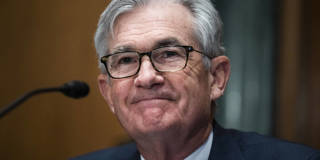When it comes to the lessons of history, current economic fundamentals, and the broader macroeconomic outlook, there is plenty for monetary-policy watchers to debate. But all should be able to agree that the US Federal Reserve has carried out an exceedingly difficult task almost perfectly.
BERKELEY – Monetary-policy watchers are currently divided into two groups. But perhaps both sides should pause and reflect on where we were 18 months ago and where we are now.
On one side of the divide are those of us who still obsess over the great imbalance between the supply of savings and the demand for funds for real investment. These were the conditions that underpinned a decade of zero-lower-bound (ZLB) interest rates and secular stagnation (low growth due to structurally low aggregate demand) after the 2008 global financial crisis. Since there is no fundamental reason for expecting the pandemic and the subsequent economic reopening to have eliminated this imbalance, it follows that the equilibrium neutral real interest rate (where monetary policy would be neither expansionary nor contractionary) remains very low: namely, where it was during the secular-stagnation period.
It also follows that major central banks’ current policies are substantially restrictive. For those of us in the first group, the salient risk is that maintaining nominal interest rates at their current level could trigger a big recession, which would definitely return us to full-on secular stagnation, with interest rates at or near the ZLB and economies severely depressed.

BERKELEY – Monetary-policy watchers are currently divided into two groups. But perhaps both sides should pause and reflect on where we were 18 months ago and where we are now.
On one side of the divide are those of us who still obsess over the great imbalance between the supply of savings and the demand for funds for real investment. These were the conditions that underpinned a decade of zero-lower-bound (ZLB) interest rates and secular stagnation (low growth due to structurally low aggregate demand) after the 2008 global financial crisis. Since there is no fundamental reason for expecting the pandemic and the subsequent economic reopening to have eliminated this imbalance, it follows that the equilibrium neutral real interest rate (where monetary policy would be neither expansionary nor contractionary) remains very low: namely, where it was during the secular-stagnation period.
It also follows that major central banks’ current policies are substantially restrictive. For those of us in the first group, the salient risk is that maintaining nominal interest rates at their current level could trigger a big recession, which would definitely return us to full-on secular stagnation, with interest rates at or near the ZLB and economies severely depressed.